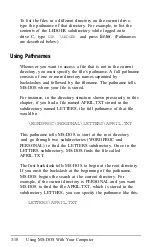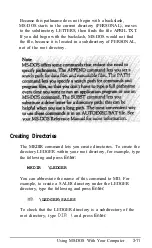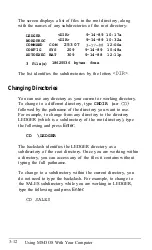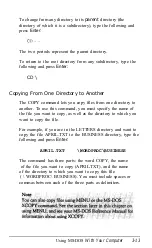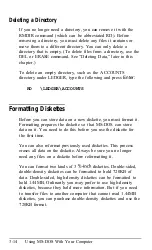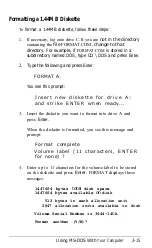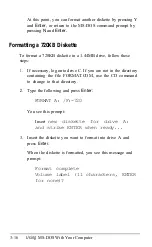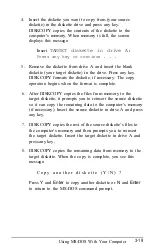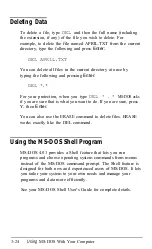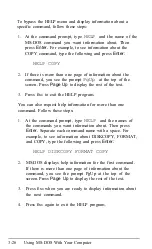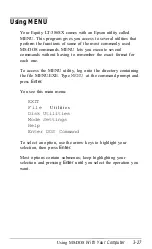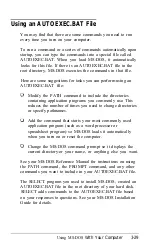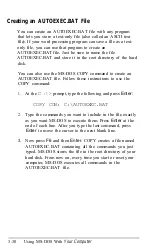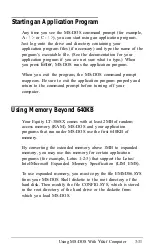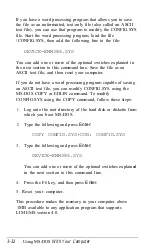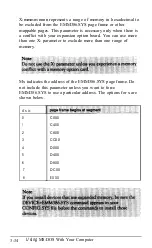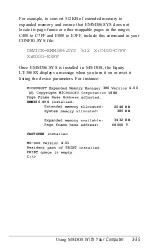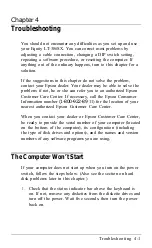
To copy all files on the diskette in drive A to the current
directory on the hard disk, type the following and press
Enter:
COPY A:*.* C:
To copy all files with names that begin with the four letters
MEMO and end with any single character, type the following
and press
Enter:
COPY A:MEMO? C:
You can also use the COPY command to combine a number of
files into one file. For example, to create a new file called
DATA that consists of the files REPORT, FACTS, and
MEMO, type the following and press
Enter:
COPY FACTS+MEMO DATA
MS-DOS combines the three files into one file, in the order in
which you specified their names.
Using BACKUP
The BACKUP command lets you store files in a special format
for archive purposes. You normally use BACKUP to back up
hard disk files; however, you can use it to copy files from any
disk to another (hard disk to diskette, diskette to hard disk,
diskette to diskette, or hard disk to hard disk).
There are advantages to using the BACKUP command:
BACKUP can split large files between two or more
diskettes. That is, if the diskette to which you are copying
has only 200KB of available space, and the next file to be
backed up occupies 300KB, the BACKUP command copies
the first part of the file to the current diskette and the
remainder to the next backup diskette. This results in more
efficient diskette use.
3-22
Using MS-DOS With Your Computer
Summary of Contents for Equity LT-386SX
Page 1: ...EQUITY LT 386SX User s Guide EPSON ...
Page 3: ...EPSON EQUITY LTT M 386SX User s Guide ...
Page 183: ... No codes Ignored D 42 System Diagnostics ...
Page 184: ... No codes Ignored System Diagnostics D 43 ...
Page 189: ... No codes Ignored D 48 System Diagnostics ...
Page 190: ... No codes Ignored System Diagnostics D 49 ...
Page 192: ... No codes Ignored System Diagnostics D 51 ...
Page 193: ... No codes Ignored D 52 System Diagnostics ...
Page 194: ... No codes Ignored System Diagnostics D 53 ...
Page 195: ... No codes Ignored D 54 System Diagnostics ...



